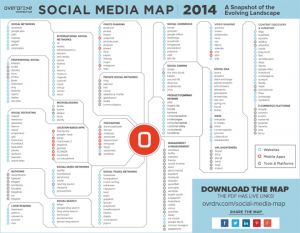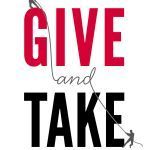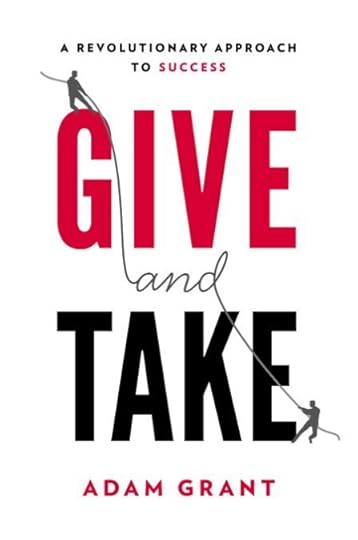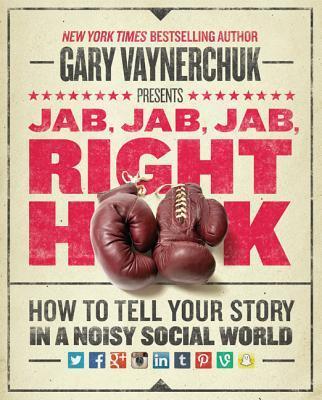Erik Qualman's Blog, page 600
May 26, 2014
Campus Cyberbullying: A Tragic but Preventable Crime

A currently trending news report alleges that Twitter messages posted by singer & platinum recording artist Rihanna set off the cyber bullying of a fan for wearing an outfit to her prom mimicking an earlier outfit worn by the popular singer. The surrounding outrage led me to imagine how the transition to college will be for high school student Alexis Carter. This question made me wonder how colleges could support students like Alexis Carter, who is college-bound and already a victim of cyber bullying. Naturally, my thoughts about cyber bullying on college campuses led me to remember Tyler Clementi.
Clementi, then a freshman at Rutgers University, committed suicide in 2010 after being the victim of webcam spying by his roommate and another student. The video, which captured a “sexual encounter” with Clementi and another man, was posted on social media and live streamed by his roommate. In 2013, Rutgers which offers lectures and training on social media, suicide by youth, cyber bullying, and college adjustment.
More recently, college freshman Alyssa Funke was the victim of cyber bullying via Twitter and Facebook messages after her high school classmates from Minnesota learned that she was an amateur porn actress. After two weeks of negative social media blitzing by the graduates from her class and other students from the high school, the University of Wisconsin-River Falls freshman used a shotgun to commit suicide. Funke was an aspiring anesthesiologist and a straight-A biology student. In Stillwater, Minnesota, the location of Funke’s high school, there are currently no criminal charges filed against the students who posted the cyber bullying messages.
According to the Cyberbulling Research Center cyber bullying can be defined as “willful and repeated harm inflicted through the use of computers, cell phones, and other electronic devices.” It is also known as “cyber bullying,” “electronic bullying,” “e-bullying,” “sms bullying,” “mobile bullying,” “online bullying,” “digital bullying,” or “Internet bullying.” According to StopBullying.Gov cyber bullying can take form as “mean text messages or emails, rumors sent by email or posted on social networking sites, and embarrassing pictures, videos, websites, or fake profiles.”
Each of these aspects of cyber bullying can be a very real part of the collegiate experience for some students. This may range from causally commenting on a negative post without understanding the full consequences, intentionally adding to a barrage of harassing social media messages, or being the unfortunate target who is unsure how to manage the deluge of blistering attacks and harassment.
This 2009 article captures several aspects of cyber bullying on college campuses including victimizing faculty, legal implications, and other student issues. All of these issues are still relevant in 2014. Operating from the perspective that no act of cyber bullying is healthy, I decided to see what some campuses have initiated to take a proactive, educative, and aggressive tone with respect to policies, practices, and programming related to cyber bullying or cyber stalking. Below are three campuses who are best practice leaders:
Clarion University has information about social media responsibility and a specific cyber bullying policy that delineates the university’s position and potential responses to cyber bullies. Clarion University also serves as a best practice model to other universities as it offers a host of on-campus resources for victims of cyber stalking and cyber bullying such as:
Clarion University Counseling Services;
The Behavioral Assessment Referral Team (BART) to report wellbeing concerns for victim or to report cyber bullying;
Clarion University Police to report being harassed or bullied over computer, phone, or other mobile device;
Office of Social Equity;
Office of Judicial & Mediation Services; and
Office of Wellness Services.
The University of West Alabama utilizes a proactive approach to cyber bullying with a detailed policy which provides specific educative information about social media. West Alabama’s policy states a clear position against Cyber bullying and cyber harassment, cites and refers to the Alabama State Law prohibiting cyber bullying, and delineates other violations such as:
A UWA student establishes a Twitter account that encourages others to submit anonymous messages to an account that will be redistributed by the account holder;
A member of the University community establishes a fake account under the name of an official University department or organization and uses the name and trademark to post vicious comments on other content; and
A member of the University faculty or staff uses his or her blog or social media account to berate or otherwise discuss engagement with or judgment of a student’s work or other information considered confidential or proprietary by FERPA or HIPPA.
Millersville University published a campus statement regarding cyber bullying that is endorsed by their University Administration and is tied to their campus mission and values. Millersville University’s Office of Social Equality & Diversity also offers a resource-filled web page dedicated to providing information about cyber bullying and cyber stalking. In addition, to a clear policy and internal support for students, Millersville University offers a robust list of external cyber bullying prevention resources:
www.ncpc.org provides information about stopping cyber bullying before it starts;
Stop Cyberbullying Before It Starts (PDF) provides useful information for parents;
Cyberbullying.us provides cyber bullying research, stories, cases, downloads, fact sheets, tips and strategies, news headlines, a blog, and a number of other helpful resources on their comprehensive public service website;
www.stopcyberbullying.org has a fun quiz to rate your online behavior, information about why some people cyber bully, and how to stop yourself from cyber bullying;
www.wiredsafety.com provides information about what to do if you are cyber bullied;
www.stopbullyingnow.com has information about what you can do to stop bullying;
www.ncvc.org/src provides training, technical assistance and materials to help develop anti-stalking programs;
www.cyberlawenvorcement.org is a network that specializes in cyber crime; and
www.stalkingvictims.com provides support safety tips and other education.
The three best practice examples of robust internal resources, definitive prohibitive policy statements, and provision of external support resources noted above offer students support in the face of cyber bullying or cyber stalking. It is beneficial for students that every campus examine their cyber bullying policy and guarantee their students have access to all available outlets to support them if they are victimized or familiar with cyber stalking or cyber bullying incidents. Provision and public endorsement of these resources may help reduce cyber bullying, and most importantly, may save a student’s life.
[image error]
Campus Cyberbullying: A Tragic but Preventable Crime

A currently trending news report alleges that Twitter messages posted by singer & platinum recording artist Rihanna set off the cyber bullying of a fan for wearing an outfit to her prom mimicking an earlier outfit worn by the popular singer. The surrounding outrage led me to imagine how the transition to college will be for high school student Alexis Carter. This question made me wonder how colleges could support students like Alexis Carter, who is college-bound and already a victim of cyber bullying. Naturally, my thoughts about cyber bullying on college campuses led me to remember Tyler Clementi.
Clementi, then a freshman at Rutgers University, committed suicide in 2010 after being the victim of webcam spying by his roommate and another student. The video, which captured a “sexual encounter” with Clementi and another man, was posted on social media and live streamed by his roommate. In 2013, Rutgers which offers lectures and training on social media, suicide by youth, cyber bullying, and college adjustment.
More recently, college freshman Alyssa Funke was the victim of cyber bullying via Twitter and Facebook messages after her high school classmates from Minnesota learned that she was an amateur porn actress. After two weeks of negative social media blitzing by the graduates from her class and other students from the high school, the University of Wisconsin-River Falls freshman used a shotgun to commit suicide. Funke was an aspiring anesthesiologist and a straight-A biology student. In Stillwater, Minnesota, the location of Funke’s high school, there are currently no criminal charges filed against the students who posted the cyber bullying messages.
According to the Cyberbulling Research Center cyber bullying can be defined as “willful and repeated harm inflicted through the use of computers, cell phones, and other electronic devices.” It is also known as “cyber bullying,” “electronic bullying,” “e-bullying,” “sms bullying,” “mobile bullying,” “online bullying,” “digital bullying,” or “Internet bullying.” According to StopBullying.Gov cyber bullying can take form as “mean text messages or emails, rumors sent by email or posted on social networking sites, and embarrassing pictures, videos, websites, or fake profiles.”
Each of these aspects of cyber bullying can be a very real part of the collegiate experience for some students. This may range from causally commenting on a negative post without understanding the full consequences, intentionally adding to a barrage of harassing social media messages, or being the unfortunate target who is unsure how to manage the deluge of blistering attacks and harassment.
This 2009 article captures several aspects of cyber bullying on college campuses including victimizing faculty, legal implications, and other student issues. All of these issues are still relevant in 2014. Operating from the perspective that no act of cyber bullying is healthy, I decided to see what some campuses have initiated to take a proactive, educative, and aggressive tone with respect to policies, practices, and programming related to cyber bullying or cyber stalking. Below are three campuses who are best practice leaders:
Clarion University has information about social media responsibility and a specific cyber bullying policy that delineates the university’s position and potential responses to cyber bullies. Clarion University also serves as a best practice model to other universities as it offers a host of on-campus resources for victims of cyber stalking and cyber bullying such as:
Clarion University Counseling Services;
The Behavioral Assessment Referral Team (BART) to report wellbeing concerns for victim or to report cyber bullying;
Clarion University Police to report being harassed or bullied over computer, phone, or other mobile device;
Office of Social Equity;
Office of Judicial & Mediation Services; and
Office of Wellness Services.
The University of West Alabama utilizes a proactive approach to cyber bullying with a detailed policy which provides specific educative information about social media. West Alabama’s policy states a clear position against Cyber bullying and cyber harassment, cites and refers to the Alabama State Law prohibiting cyber bullying, and delineates other violations such as:
A UWA student establishes a Twitter account that encourages others to submit anonymous messages to an account that will be redistributed by the account holder;
A member of the University community establishes a fake account under the name of an official University department or organization and uses the name and trademark to post vicious comments on other content; and
A member of the University faculty or staff uses his or her blog or social media account to berate or otherwise discuss engagement with or judgment of a student’s work or other information considered confidential or proprietary by FERPA or HIPPA.
Millersville University published a campus statement regarding cyber bullying that is endorsed by their University Administration and is tied to their campus mission and values. Millersville University’s Office of Social Equality & Diversity also offers a resource-filled web page dedicated to providing information about cyber bullying and cyber stalking. In addition, to a clear policy and internal support for students, Millersville University offers a robust list of external cyber bullying prevention resources:
www.ncpc.org provides information about stopping cyber bullying before it starts;
Stop Cyberbullying Before It Starts (PDF) provides useful information for parents;
Cyberbullying.us provides cyber bullying research, stories, cases, downloads, fact sheets, tips and strategies, news headlines, a blog, and a number of other helpful resources on their comprehensive public service website;
www.stopcyberbullying.org has a fun quiz to rate your online behavior, information about why some people cyber bully, and how to stop yourself from cyber bullying;
www.wiredsafety.com provides information about what to do if you are cyber bullied;
www.stopbullyingnow.com has information about what you can do to stop bullying;
www.ncvc.org/src provides training, technical assistance and materials to help develop anti-stalking programs;
www.cyberlawenvorcement.org is a network that specializes in cyber crime; and
www.stalkingvictims.com provides support safety tips and other education.
The three best practice examples of robust internal resources, definitive prohibitive policy statements, and provision of external support resources noted above offer students support in the face of cyber bullying or cyber stalking. It is beneficial for students that every campus examine their cyber bullying policy and guarantee their students have access to all available outlets to support them if they are victimized or familiar with cyber stalking or cyber bullying incidents. Provision and public endorsement of these resources may help reduce cyber bullying, and most importantly, may save a student’s life.
[image error]
May 22, 2014
Some of the Best Banking Apps to Manage Your Finances

Managing your finances can be a time consuming and lengthy process, and can almost feel like a job in itself. However, staying on top of your financial goals is certainly necessary; whether it’s managing your portfolio, paying credit card debt or filing taxes. Thanks to technology becoming more advanced, plenty of smart phone and tablet apps have been designed with the intention of making managing your finances easier and a process that can be done whilst you’re on the move. So say good bye to lots of spreadsheets and piles of paper and take control of your finances right from your phone or tablet. Take a read of some of the best banking apps available at the moment…
Track spending
Always find yourself overspending on your credit card? Well the Billguard app is a great way to keep track of your all your credit cards and any activity that takes place. The app allows you to view all of your accounts together and can show you where your money is going as well as provides you with information about where you can save money. The app searches for web coupons that will lower your bills based on your spending patterns, providing a personalised service and meaning that you will no longer be swamped with coupons that are not relevant to you in anyway. You can also get alerted in real-time to any unwanted and unauthorised charges so that you immediately know when any unusual activity has taken place on your credit cards.
Budgeting
Budgeting can be difficult and actually sticking to a budget can be even harder. However the BUDGT app can make things much easier with it telling you how much money you can spend each day, also taking into account the amount of money that you have already spent. The app is really easy to use with its user-friendly interface and all you have to do is set a budget for a selection of different categories for whatever suits your lifestyle and then track expenses as you spend. The BUDGT app does the rest for you and lets you know when you have overspent.
Investment Management
Sigfig is a free app that you can download to manage your investments. This personal finance app allows you to sync with your investment accounts and track all of your stocks, funds and much more all in real-time. What’s more, the app allows you to use charts to check your performance, allocation and risk. It pulls all of your investments on one single dashboard and a means you can track all of your investments across all of your devices.
If you are already using services from an investment management company to help you with your finances, it is well worth checking out if they have their own smartphone app. For example, Ramsey Crookall, a company that specialises in investment management has a free app that enables users to access their portfolio of investments held at Ramsey Crookall, which includes a summary page with the market value of the portfolio, the book value, profit or loss, the number of holdings and the amount of any cash held on account meaning that customers can simply get a summary of their finances by simply logging in onto their smartphone app.
Checking everything is paid on time
With multiple credit cards, back accounts and bills it’s easy to fall into your overdraft and fall behind on paying your bills. The award winning mobile app, Check can help to avoid this happening with its main priority to manage your bills and make sure that everything is paid on time. The app clearly sets out all of the bills that need to be paid and will send push notifications for any approaching due dates. The app can even act as a direct debit if you choose, so that Check app pays the bills on your behalf.
[image error]
May 21, 2014
Let Social Media Put Your Teeth into Finding Dentists and Insurance

 If it’s time for your next cleaning and you don’t have a dedicated dentist in mind, then let social media help you in the dentistry search.
If it’s time for your next cleaning and you don’t have a dedicated dentist in mind, then let social media help you in the dentistry search.
That’s right, more and more dentists are turning to social sites to get the word out about everything their dental practices have to offer.
With sparkling white teeth in mind, here are a number of ways you can use social media to find your next dentist:
Dental Reviews
When it comes to dentistry, there’s a mouthful of competition out there, so it’s increasingly important to gauge the competition before choosing a dentist. Luckily, social media opens up all new avenues of research in the form of online reviews.
So, if you’ve found a dentist or a dental practice you’re interested in, visit social sites like Yelp to read reviews from actual patients before getting any dental work done. Although a dentist may look good on paper, consistent negative reviews could mean otherwise.
Additionally, online reviews can provide you with insight into local dentists who are better than you might expect.
Friending Your Dentist
A growing number of dentists are taking to social media in order to stay connected with their patients and share helpful dental hygiene tips like at-home cleaning techniques. By friending your dentist or the dental practice you are considering visiting, you’ll have unlimited access to all-things dentistry.
In addition, if you’re in search for a new dentist, take the time to follow local dental practices on sites like Facebook and Twitter.
By liking Facebook fan pages and following Twitter feeds, you can keep track of everything your local dentistry market has to offer and thus choose a dentist that’s right for your needs.
Getting a Feel for Customer Interaction
Customer interaction and customer satisfaction go hand-in-hand, which is why it’s so important to find a dental practice that’s devoted to its patients.
If you have questions about whether your dental health insurance will cover your next visit or you want information on certain procedures, social media can give you a good idea of how connected dental practices are to their patients.
From prompt answers to thorough patient feedback, keeping an eye on a dental practice’s social presence will give you a good indication of how they treat the customers they already have.
Social Deals
Dentists dish out deals just like any other business and social media is the perfect way to hunt down dental deals and discounts.
Some dental practices use sites like LivingSocial and Groupon to offer deals like half-price cleanings and discounted crowns and oral x-rays, so make sure you stay on the lookout for socially-savvy dental promotions.
Asking Friends and Family for Recommendations
Social networking is the ultimate way to stay connected with friends and family, but it’s also a great way to ask all of your social connections for dentistry recommendations.
Whether you’re trying to find better dental insurance or your next dentist, simply posting the question on sites like Facebook will result in plenty of advice and recommendations from your trusted social connections.
The next time you need some dental work, use the social tips above to find the perfect dentist for you.
Photo credit: bls.gov
[image error]
NEW: Overdrive’s Spring 2014 Social Media Map

Overdrive Interactive has recently updated their signature Social Media Map to present the most current snapshot of social in the digital space, including live links to more than 240 sites, apps and tools broken into 24 categories. The Socialnomics team and many of our readers have always loved the Overdrive Social Media Map so we are cross-posting the latest edition.
Some notable features of the map include:
A new Content Discovery & Curation category
Seven new Social Management & Measurement tools
A comprehensive list (with live links) of American, professional and international social networks, websites and tools/platforms
And much more!
Click the map to download your copy today!

[image error]
May 19, 2014
5 Must Have Books for Aspiring Social Entrepreneurs

1 / Made To Stick: Why Some Ideas Survive and Others Die by Chip & Dan Heath
In a world of too much noise, the Heaths use science based approaches to help us break through the clutter. If you need to improve your focus, this book is for you.

2 / Give and Take: Why Helping Others Drives Our Success by Adam Grant
Grant explains why it is not only better to give than to receive, but also more profitable. Many fail to become leaders because they want to get before they give. Don’t fall into this trip, digest this book.
3 / Delivering Happiness: A Path to Profits, Passion, and Purpose by Tony Hsieh
 Zappos CEO Tony Hsieh is considered one of today’s top Digital Leaders. Learn the secret to his success and how his transformative leadership style created a billion dollar company in the desert of Las Vegas. This book will make you think differently about your business and leadership style.
Zappos CEO Tony Hsieh is considered one of today’s top Digital Leaders. Learn the secret to his success and how his transformative leadership style created a billion dollar company in the desert of Las Vegas. This book will make you think differently about your business and leadership style.
4 / Likeable Social Media byDave Kerpen
Dave Kerpen demystifies social media for business and leaders. It’s no fluke that this is the top book on social media today.
5 / Jab, Jab, Jab Right Hook: How to Tell Your Story in a Noisy Social World by Gary Vaynerchuk
Entertaining book full of hands on guidance for today’s entrepreneur. Gary Vaynerchuk is more of a salesman than a tech geek and the reader benefits from his practical advice on how to use today’s digital tools.
[image error]
5 Must Books for Aspiring Social Entrepreneurs

1 / Made To Stick: Why Some Ideas Survive and Others Die by Chip & Dan Heath
In a world of too much noise, the Heaths use science based approaches to help us break through the clutter. If you need to improve your focus, this book is for you.

2 / Give and Take: Why Helping Others Drives Our Success by Adam Grant
Grant explains why it is not only better to give than to receive, but also more profitable. Many fail to become leaders because they want to get before they give. Don’t fall into this trip, digest this book.
3 / Delivering Happiness: A Path to Profits, Passion, and Purpose by Tony Hsieh
 Zappos CEO Tony Hsieh is considered one of today’s top Digital Leaders. Learn the secret to his success and how his transformative leadership style created a billion dollar company in the desert of Las Vegas. This book will make you think differently about your business and leadership style.
Zappos CEO Tony Hsieh is considered one of today’s top Digital Leaders. Learn the secret to his success and how his transformative leadership style created a billion dollar company in the desert of Las Vegas. This book will make you think differently about your business and leadership style.
4 / Likeable Social Media byDave Kerpen
Dave Kerpen demystifies social media for business and leaders. It’s no fluke that this is the top book on social media today.
5 / Jab, Jab, Jab Right Hook: How to Tell Your Story in a Noisy Social World by Gary Vaynerchuk
Entertaining book full of hands on guidance for today’s entrepreneur. Gary Vaynerchuk is more of a salesman than a tech geek and the reader benefits from his practical advice on how to use today’s digital tools.
[image error]
Can MOOCs Offer A Viable Alternative To Traditional Education

Over the past five years, there has been a terrific rise in the popularity of online courses available over the internet. Dubbed MOOC for Massively Open Online Courses, this medium of learning has taken over virtual classrooms and distant education platforms as a viable alternative to the traditional classroom systems. So how exactly does MOOC work?
Remote learning, in the traditional sense, referred to universities sending study materials to their students through postal mail. Over time, with the advent of technology, classroom sessions began to be streamed over the internet or satellite to students located in other locations. However, these platforms had their own disadvantages. While the former method completely removed the student-teacher interaction that is necessary for proper transmission of knowledge, the latter method required extensive investment and was also difficult to be accessed by students from remote locations that either were in a different time zone or did not have sufficient infrastructure to access the live feed.
MOOC is thus a cheap and efficient alternative to the other forms of remote learning. With MOOC, the students accessing the classroom only require an internet connection. Also, unlike satellite streaming, MOOC courses are stored on third party servers so that students may access the courses at their convenience.
Besides universities, a number of third party organizations today offer courses on various subjects through MOOC. Khan Academy, one of the leading non-profit organizations in this segment, reaches out to over 10 million students every month with more than 300 million lessons delivered till date. Coursera, another third party MOOC service which operates on profit, has nearly 7.1 million registered learners on the service.
The MOOC industry is still at its infancy with a majority of learners still from the first world or in third world countries through the support of help-groups. However, for the industry to mature, there needs to be a public-private partnership that will enable governments to involve private enterprises in infrastructure building. For instance, AllStream, one of the leading broadband operators in Canada has recently announced that their nearly 30,000 kilometers of optic fiber across the country will be used to connect universities with remote locations of the country to help in education. Similarly private institutions like Harvard, Stanford and MIT have tied up with various governments to make their courses available as MOOC to the outside world.
The future is definitely bright for MOOC. The New York Times declared the year 2012 as the “Year of the MOOC”. With better infrastructure and greater cooperation among various governments, the real benefits from MOOC will be reaped by students from the impoverished regions of the world who may not afford to study at Harvard or MIT in their lifetimes.
[image error]
Big Data’s Push in the Social Media World

From posts to tweets to updates to photos to videos and every social stop in between, social media sites push a ton of data every millisecond of the day.
Luckily, big data is helping the social networking world direct all that data to the appropriate places.
With socially savvy data in mind, here are just a few ways big data has a positive impact on social media:
Optimized Social Experience
Social media is all about making connections and networking with a massive audience.
In fact, social media users depend on social sites like Facebook and Twitter to connect with friends and family as well as find interests similar to their own. Where big data comes into play is by taking the structured and unstructured data from millions of users and turning it into useful information.
Without the data analyzing that big data provides, social media users wouldn’t receive relatable friend recommendations, advertisements, and other forms of engagement through the web.
Thanks to big data, social media is a much more targeted and personal experience.
Social Marketing
Marketing and social media go hand-in-hand and more businesses than ever before are relying on social campaigning to find new customers and keep current customers loyal.
Big data is helping businesses streamline the social marketing process by helping predict future behaviors based on data sets as well as using those data sets to better target audiences.
When big data helps businesses optimize their marketing and campaigning practices, it makes the social experience much more enjoyable for all parties involved.
From archiving and understanding customer feedback to correlating social information with product purchase rates, when businesses stay focused on the big data bottom line, it increases campaign effectiveness and makes the social media world better.
Building a Social Database
Just because social media’s main purpose is socializing doesn’t mean users don’t put a ton of hard work into building their social profiles. Whether it’s an individual user or a business, big data allows social profiles to grow exponentially.
Vast amounts of data don’t mean much if that data isn’t streamlined and accessible.
Big data helps in that aspect too by archiving every post, tweet, picture, video, and comment for later use. In other words, big data not only stores all the data from sites like Facebook, Twitter, and Instagram, it makes that data accessible and usable in any number of situations.
Examples of Social Data in Action
Social sites are already putting big data to work to make the world of social networking a better place.
For instance, Facebook is collecting data based on users’ “likes” to more accurately predict what people care about. In addition, LinkedIn is using its data to build a talent graph that will help users on the site make better professional connections.
That’s not all because Pinterest is also taking advantage of big data by collecting data on users’ pinboards and using that information to create optimized fashion trends on the site.
And, Twitter is collecting and processing its millions of daily tweets and all the data that goes along with them to create real-time glimpses into the news stories most Twitter users follow and trust.
From social marketing to the optimized social experience, it’s plain to see that big data’s push into the world of social media is a push in the right direction.
Photo credit: Forbes.com
[image error]
May 15, 2014
The intersection of SEO and Real Marketing. Four take aways from Grasshopper

I’ve been an entrepreneur my entire life. I started a landscaping company in high school and over 15 years’ time my team and I grew that business to over 100 people. Recently, I navigated the exit of that company and have since started GreenPal which is descried as “Uber for lawn mowing.”
Transitioning into a digital entrepreneur has been an enriching experience for me while learning the disciplines I need to build and distribute a new product. My role on our team is one of the CMO. Basically, it’s my job to make sure enough consumers are showing up to the front door to use our product.
Very quickly I am having to learn the different facets of digital marketing such as SEO, paid acquisition, CRO, email marketing, and also offline channels such as direct mail. While gaining a basic competency in these different disciplines I have observed how much they overlap, and how well executed campaigns can deliver results to each of them simultaneously.
While taking a course on SEO link building techniques from Point Blank SEO, I learned about Grasshopper’s marketing campaign back in 2009. Grasshopper is a virtual phone system for entrepreneurs, at that time having re-brandied, they created a well thought out and coordinated campaign. To get the word out about their new brand, they sent via FedEx chocolate covered grasshoppers to 5,000 influential bloggers, reporters, CEO’s, entrepreneurs, and celebrities.
The success of the campaign was tremendous. Overnight a sensational buzz was created about their phone system product. Bloggers wrote about it, influencers tweeted, reporters talked about it on TV, and even a few of them eat the grasshoppers on the air. Grasshopper has since published a case study detailing all of the metrics resulting from their well-executed plan.
While learning about Grasshopper’s campaign in the link building course I was amazed that they were able to attract 100’s of invaluable links from press mentions and also from some of the most influential bloggers out there. Every SEO knows that these authority boosting links are the most valuable to get and are almost impossible to acquire through deliberate means. However, when I read over Grasshopper’s official case study and published data, no mention was made as to how many links they built as a result of the campaign. It’s almost like the links were an afterthought or side benefit. This serves as an example of how real company stuff (RCS) naturally builds stronger, more valuable links better than any other deliberate means available.
I can imagine in larger organizations marketing functions such as SEO, Social, Content, and paid channels are silo’d . I believe as marketers we can learn from well executed cross discipline campaigns like this one and observe how they benefit every facet of both digital and analog marketing. Even 5 years later, Grasshopper is still reaping SEO rewards from the 2009 campaign, as those valuable links still in place have established their authoritative domain, thus affording them high rankings for their competitive industry’s search keywords and phrases.
It’s amazing how this real world, guerilla marketing style, campaign not only got people talking about their product, but it also delivered a substantial benefit to their SEO strategy.
Surmising Grasshopper’s campaign; four take aways “jump” out:
Zoom out: Coordinate a campaign that will benefit the whole business
Be unique, be different: Think outside the box and craft a campaign that taps into a human sense such as curiosity
Be ready: Do not conduct a large scale potentially impactful campaign until you have to the product to back it up, and service the surge of interest
Plan everything: Spend 10 hours sharping your ax and 1 hour chopping down the tree.
So as marketers, we should consider zooming out of our area of focus and craft initiatives that can create a lift in all parts of our business and marketing efforts. Hugely successful campaigns such as this one are within our reach if we think outside the box, plan, and execute.
Thumbnail: http://tinyurl.com/mwxltce

[image error]






